Editor’s Note: CNN’s series often carry sponsorship originating from the countries and regions we profile. However, CNN retains full editorial control over all of its reports. Our sponsorship policy.
When the mercury soars in Dubai, the thought of living without air con is enough to make anyone break out in cold sweats.
But keeping cool comes at a cost. During the summer months air conditioning is responsible for 60% of peak electricity demand in Dubai, and the UAE government has named it as a factor behind why the Gulf state has one of the highest levels of energy consumption per capita in the world. From citizen-led initiatives to constructing a giant renewable energy plant, there’s an ongoing battle to meet – and mediate – demand.
And yet, before air conditioning became ubiquitous, Emiratis were more than capable of staying cool, employing vernacular architecture which sheltered people from the harsh climate without the need for electricity.
These traditional building techniques were sidelined as the city moved towards a contemporary vision wrought of concrete, steel and glass. But as Dubai prepares for Expo 2020, national pavilion announcements show a revival of low-tech sustainability is underway.
Austria
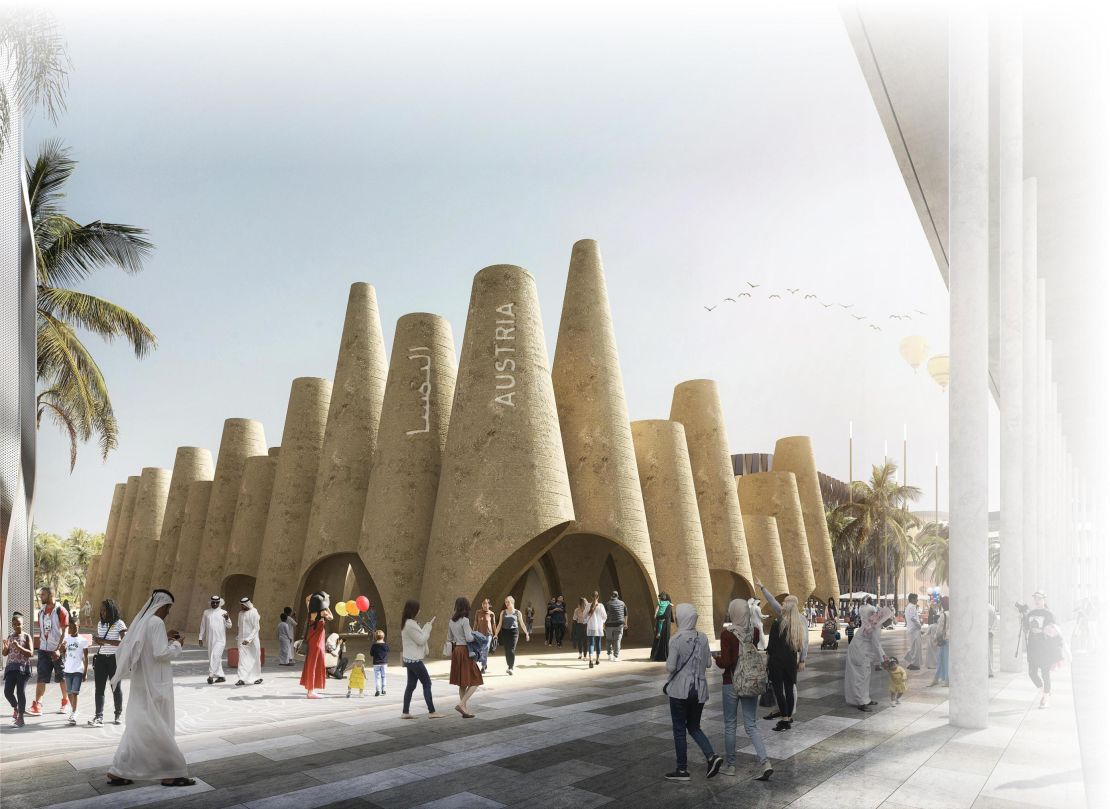
Clemens Russ, an architect at Vienna-based Querkraft, project managed the design for the Austrian Expo pavilion.
“Something that we have to really honestly discuss about sustainability (is) it’s not only about putting photovoltaic cells on a rooftop, or producing energy,” he argues. “It’s also how we are using our building materials.”
“What I would wish to see more are urban concepts that work with local conditions,” he explains. “By ignoring the local conditions such as sun, wind, sand, snow, rain, humidity … buildings have to perform extremely high(ly) to cope. This increases the building costs of technical infrastructure – such as mechanical cooling (and) ventilation parts – absurdly.”
The Austrian pavilion at Expo 2020 utilizes a passive, naturally ventilated system inspired by a “barjeel” wind tower – an architectural feature which can trace its roots back 5,000 years according to Shatha Al-Mulla, head of the research and studies unit at the Architectural Heritage and Antiquities Department of Dubai Municipality.
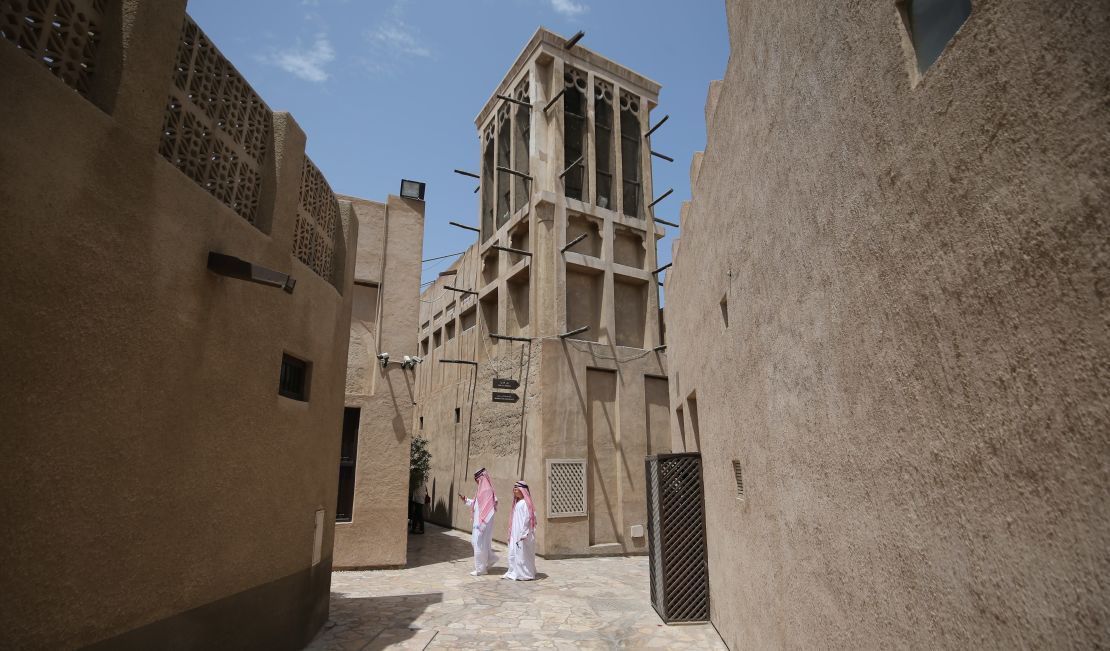
Al-Mulla says a wind tower in Dubai usually has four open sides at the top, with an interior dividing panel facing the wind. “When wind hits the tower, it enters the building through two sides,” she explains, and “because it’s cooler air than inside, it pushes the hot air (up) through the other two sides.” It can mean the difference between 30 degrees outside and feeling 20 degrees inside, she adds.
The Austrian pavilion will be constructed of intersected concrete cones, prefabricated and cut to different heights. Russ says six centimeters of rammed clay with strong heat storage properties will cover the walls, and the cones will have ventilating domes at their apexes allowing in light.
Utilizing Dubai’s large day-night temperature swing, at night entrances at the base and the apexes will open, allowing cold air to flow between the cones, releasing heat from the walls and floor, and storing cold energy there instead. During the day entrances and apexes will close, locking cool temperatures within. The architects believe the system could reduce energy consumption by 72%.
“What we tried was to get a new dialogue, thinking of old strategies where people could not just randomly use money or energy resources for cooling down their spaces,” Russ explains. “We wanted to show how easily we can use the local context, like the Arab building culture, which is astonishing.”
Spain
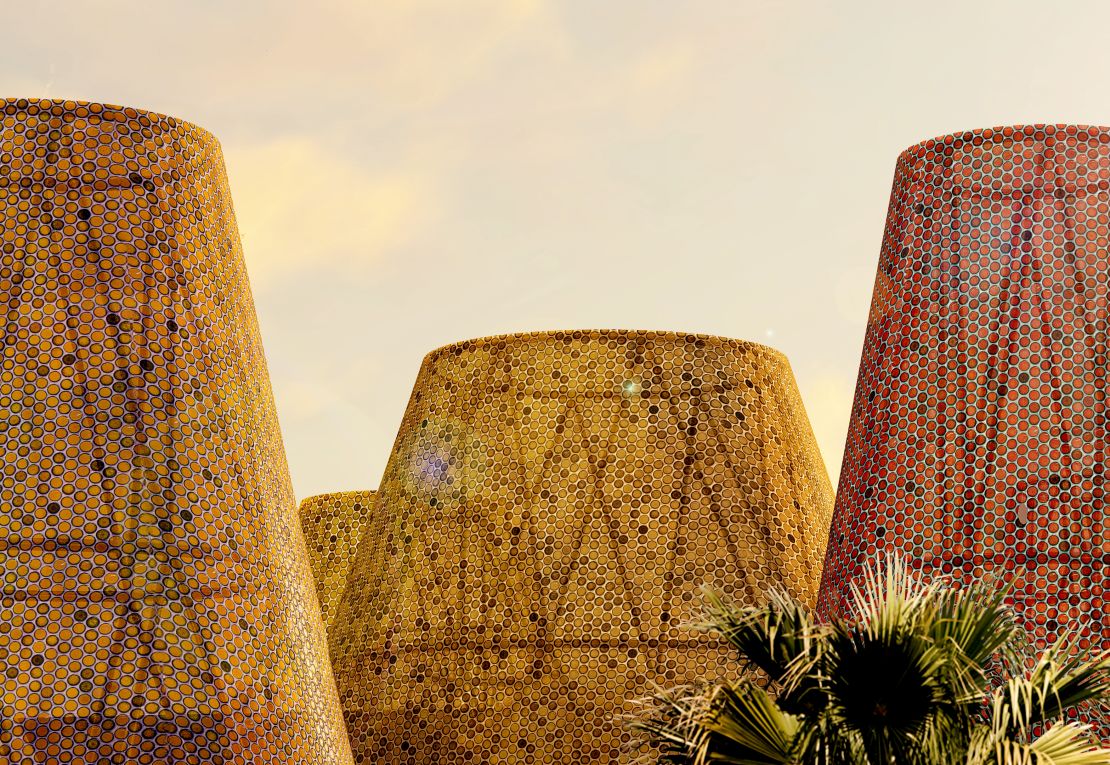
The Spanish pavilion, designed by Madrid-based amann-canovas-maruri, also takes a conical approach, with 17 tents above a large open-plan exhibition space. “These tents will have the form of solar chimneys,” says architect Nicolas Maruri.
Solar chimneys utilize the heat of the sun on the side of a structure, drawing hot air out of the top of a building while allowing cool air in at the bottom – a natural ventilation method has been around for centuries.
“What we first tackled was the idea of reducing energy consumption without using much technology,” he adds. Parts of the exhibiting space will be buried up to 4.5 meters (15 feet) underground to reduce heat transmission, and the architects hope to use some recycled materials and wood.
Netherlands
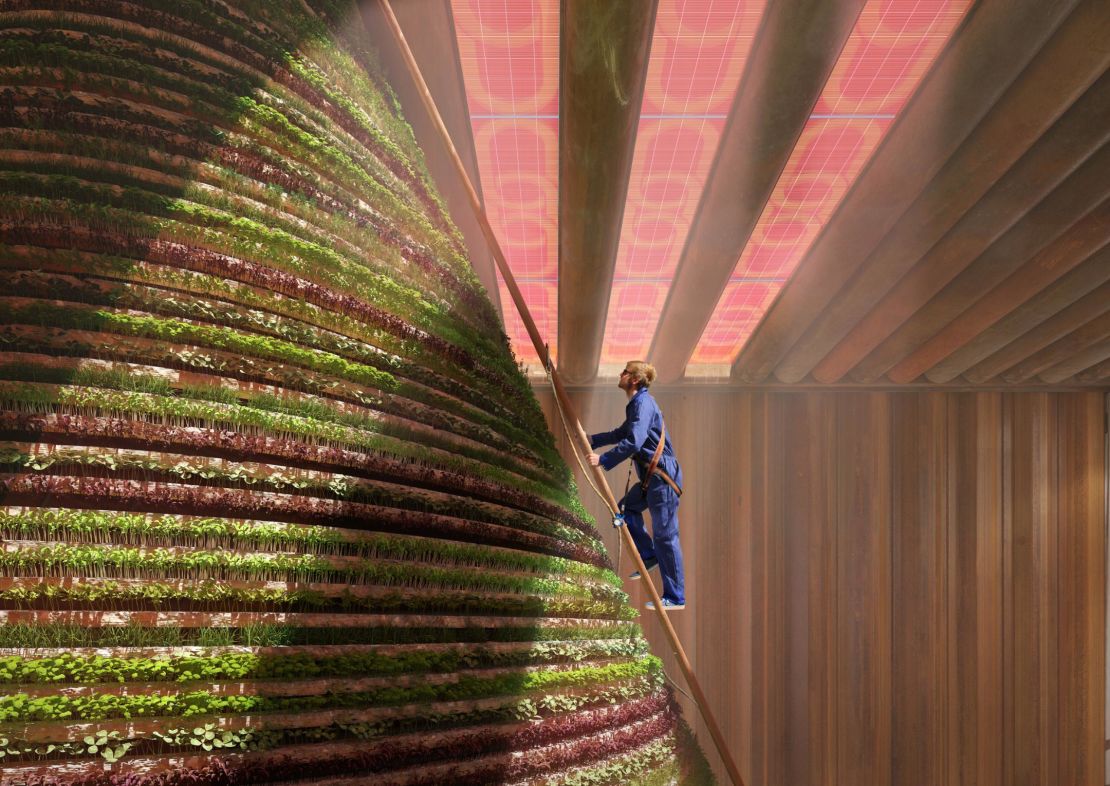
Michiel Raaphorst, founding partner at V8 Architects and part of a consortium behind the Dutch pavilion, says “because the conditions are so harsh you really need to refer back to traditional technologies of natural ventilation and to building mass for heat accumulation.”
The Dutch pavilion seeks to harness the power of the sun to create a biotope: a self-contained natural environment.
The pavilion arrives at a time when enterprises in Dubai are trying to boost the emirate’s homegrown food supply. Inside the biotope, V8 Architects say they will use solar power to condense moisture out of the air, producing water. A giant cone of vegetables will produce oxygen, while on the dark inside of the cone mushrooms will grow, producing carbon dioxide to feed the vegetables.
“It’s always making one inclusive system,” says the architect, adding they hope to feed visitors with produce grown in the pavilion.
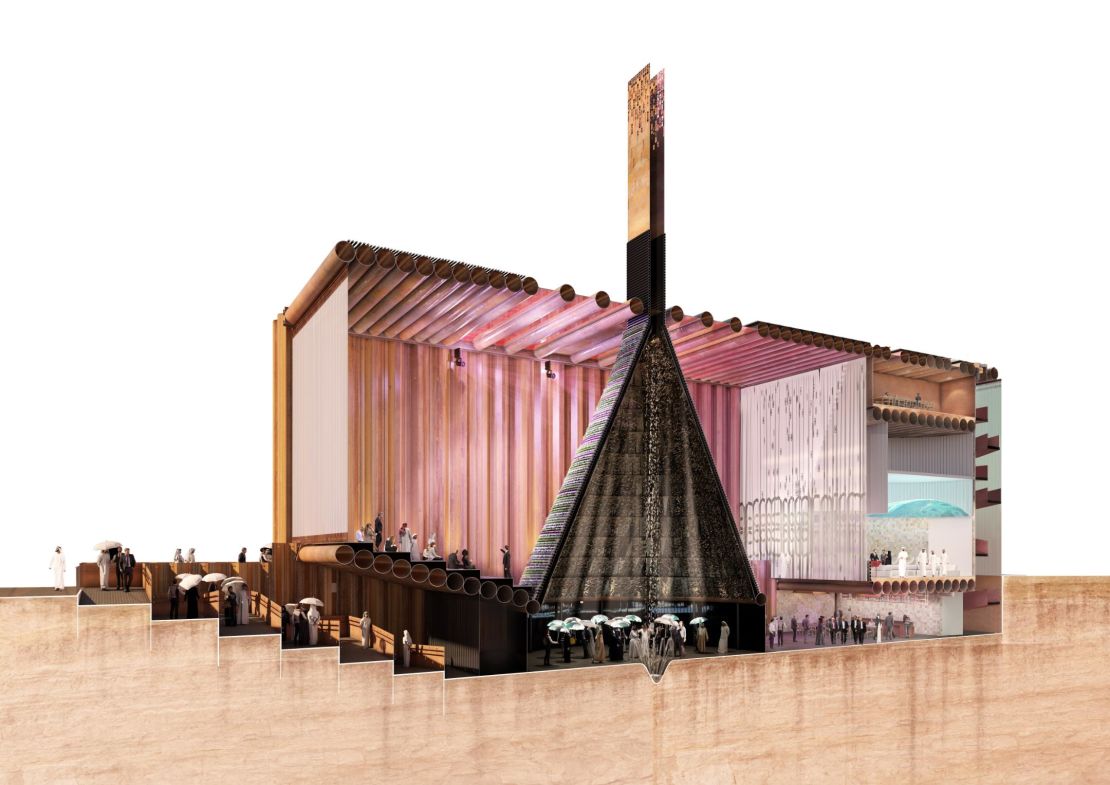
Large parts of the pavilion will be constructed from rented steel sheet piling (a material used in excavation or earth retainment and, per the architect, in abundant supply in Dubai). Once the Expo ends, it simply returns to the supplier. “For every component we have found an afterlife,” he says.
“(The pavilion is) inspired by Dubai, by the harsh conditions, but also a very actual movement,” Raaphorst adds. “We use too much from the earth, and we should give back.”
To see more pavilions planned for Expo 2020 Dubai, scroll through the gallery above.


























